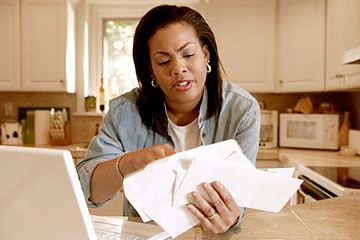Little old ladies seem so harmless when you're standing behind them in the grocery store, with their strange selections of food slowly chugging down the checkout lane. But then they're apt to do something absolutely horrifying: Pull out a checkbook.
It's a dreadful sight, especially to those who were never terribly endeared to the ways of the checkbook in the first place. The sluggish scratching of the pen that fills in line after line of endless information, the slow glance back up with a concentrated stare at the total displayed on the register screen, the pensive return to the check and the continuation of the long looping scrawls -- it can feel like a prison sentence. And just when the handoff occurs and you think the whole painful ordeal is over, the cashier says those dreaded words: "And can I see your driver's license?"
Advertisement
Luckily, it appears the dark cloud is finally lifting from our lives. Checks are slowly being shuffled off this mortal coil, although it'll probably be a number of years before we can safely expect to entirely avoid the preceding nightmarish scenario.
There are a number of reasons for the shift -- and yes, speed is a major factor, although it's much more a matter of processing time as opposed to making elderly check-writing aficionados more convenient for the rest of us. With debit cards on the rise, and the ongoing amp-up of electronic check conversion, the process of paying for items has improved on several fronts -- for individuals, businesses and banks alike.
Electronic banking methods are not only faster (making it harder for consumers to float checks, stop checks and write fraudulent checks), they're also usually more secure, reliable and efficient, all of which helps make the entire process a great deal cheaper -- and quite a bit easier on the environment.
On the next page, we'll look at a few examples of how the 21st century is saying sayonara to paper checks of all sorts.
Advertisement

